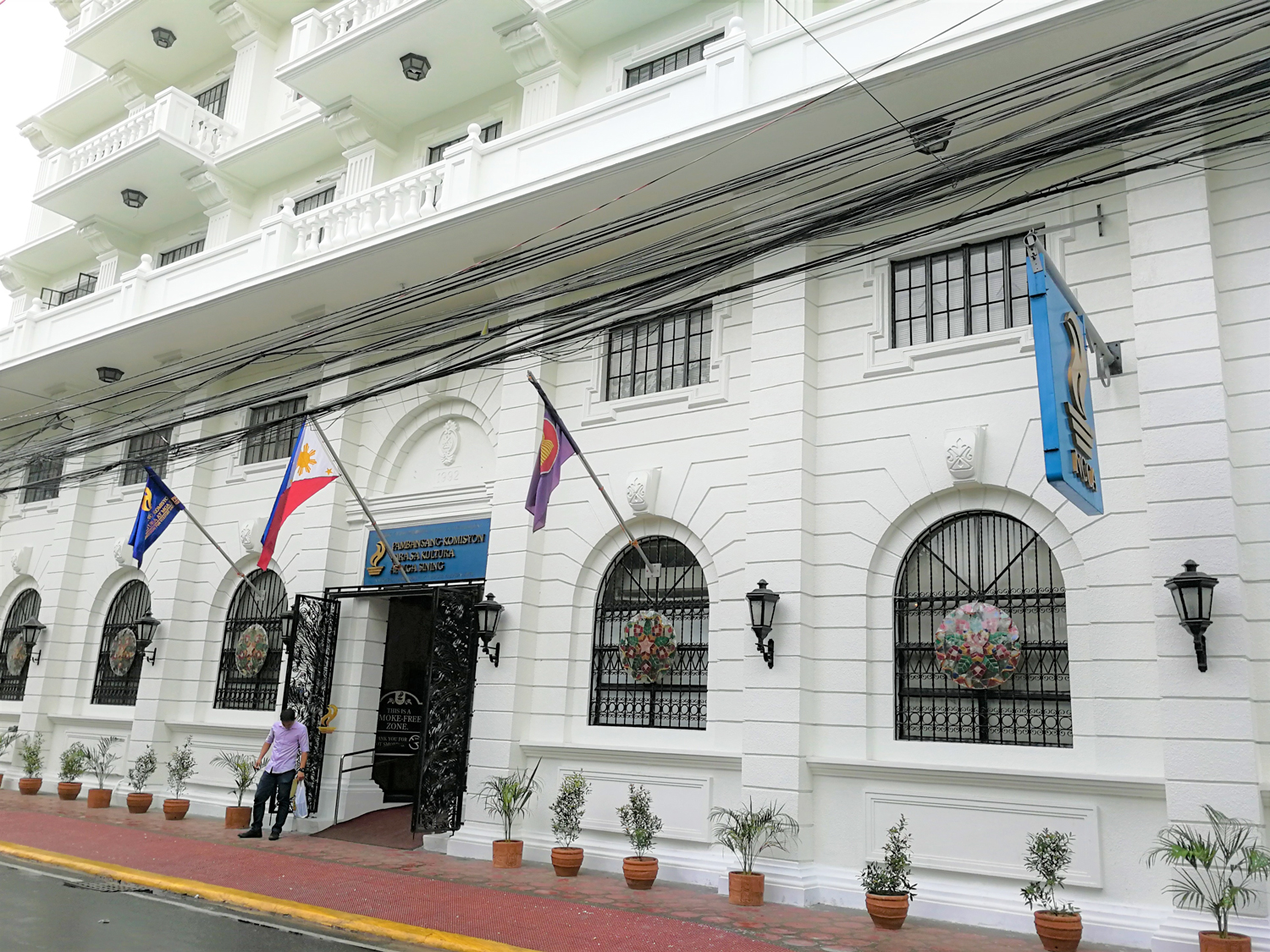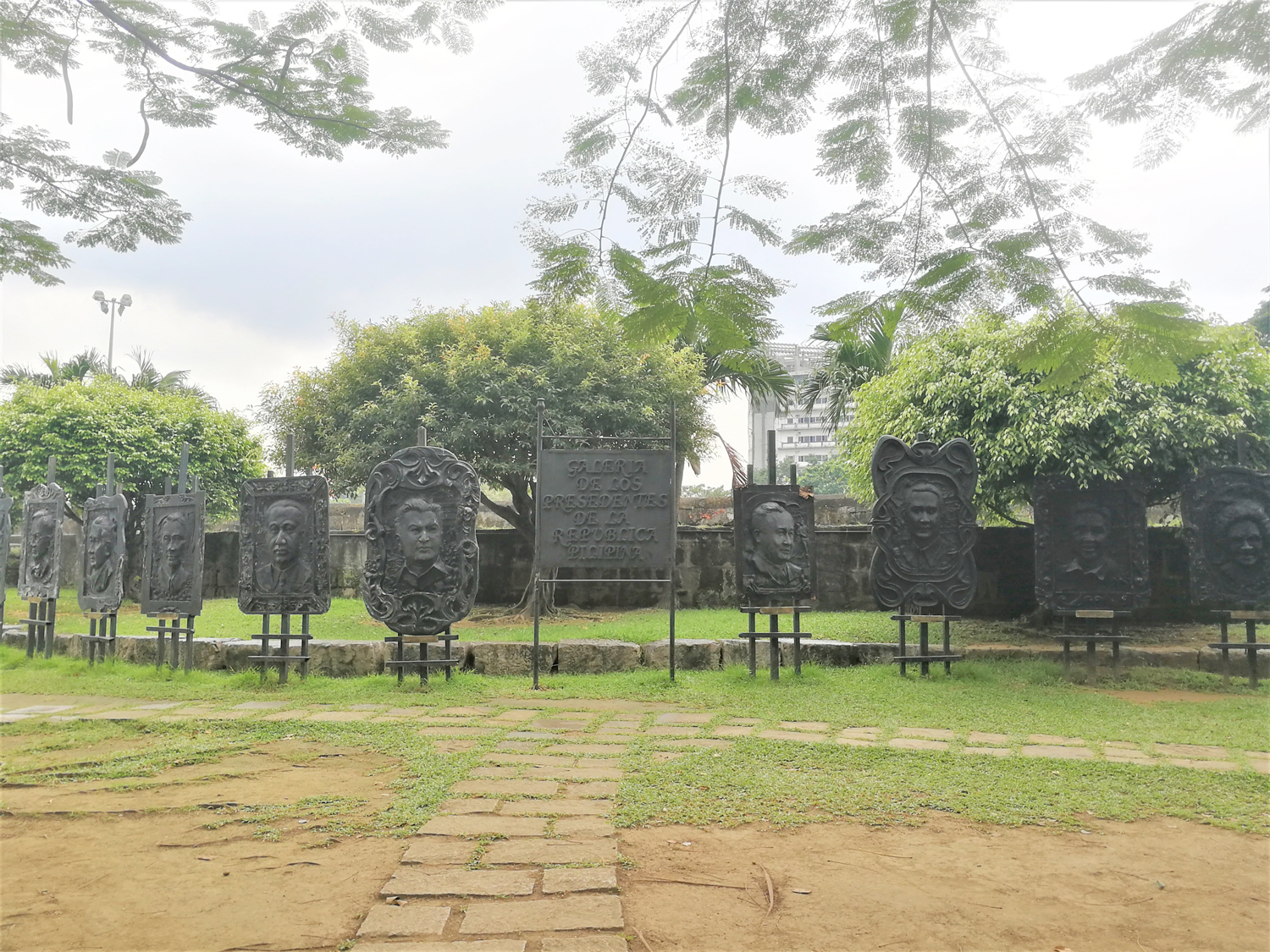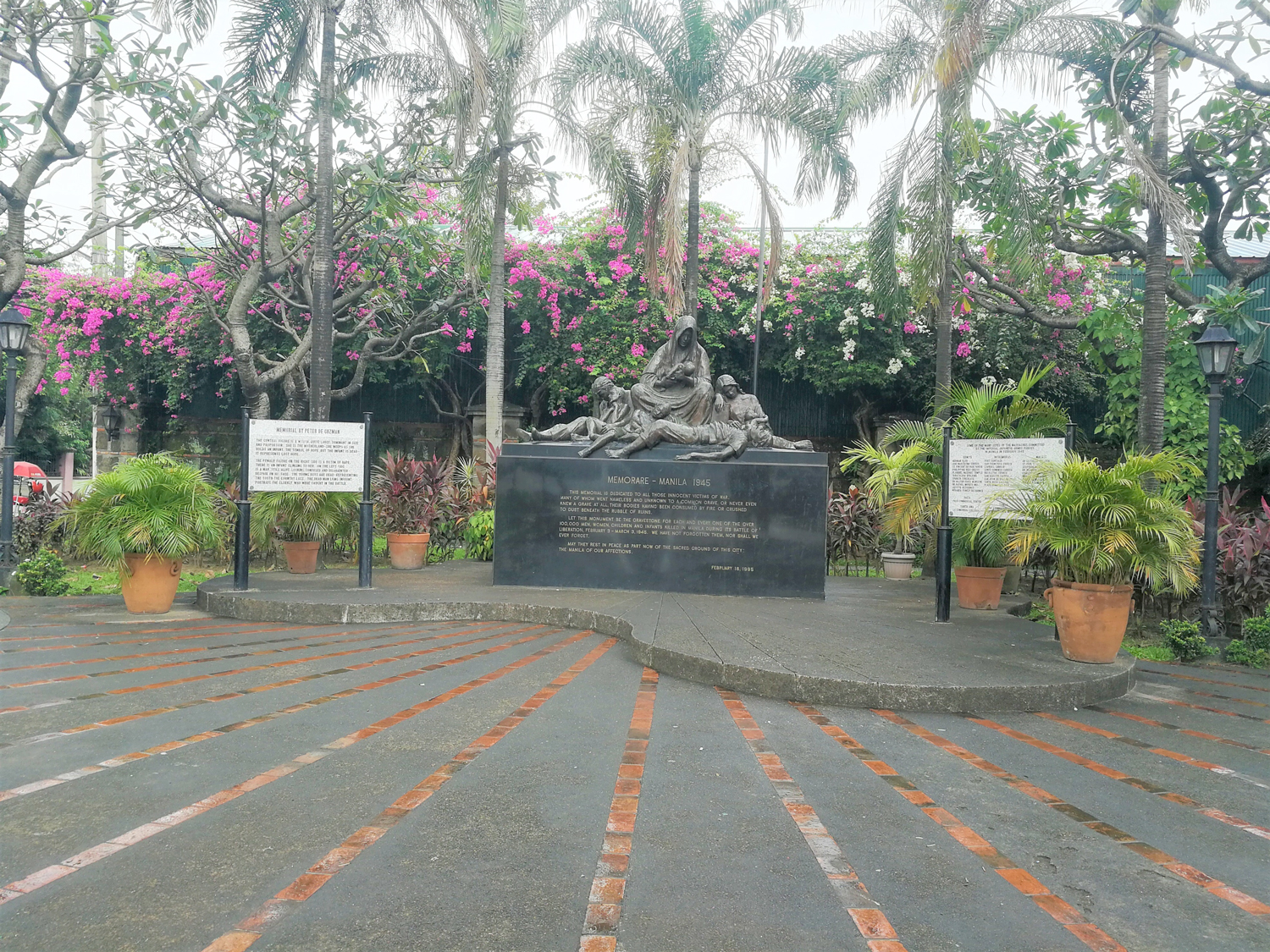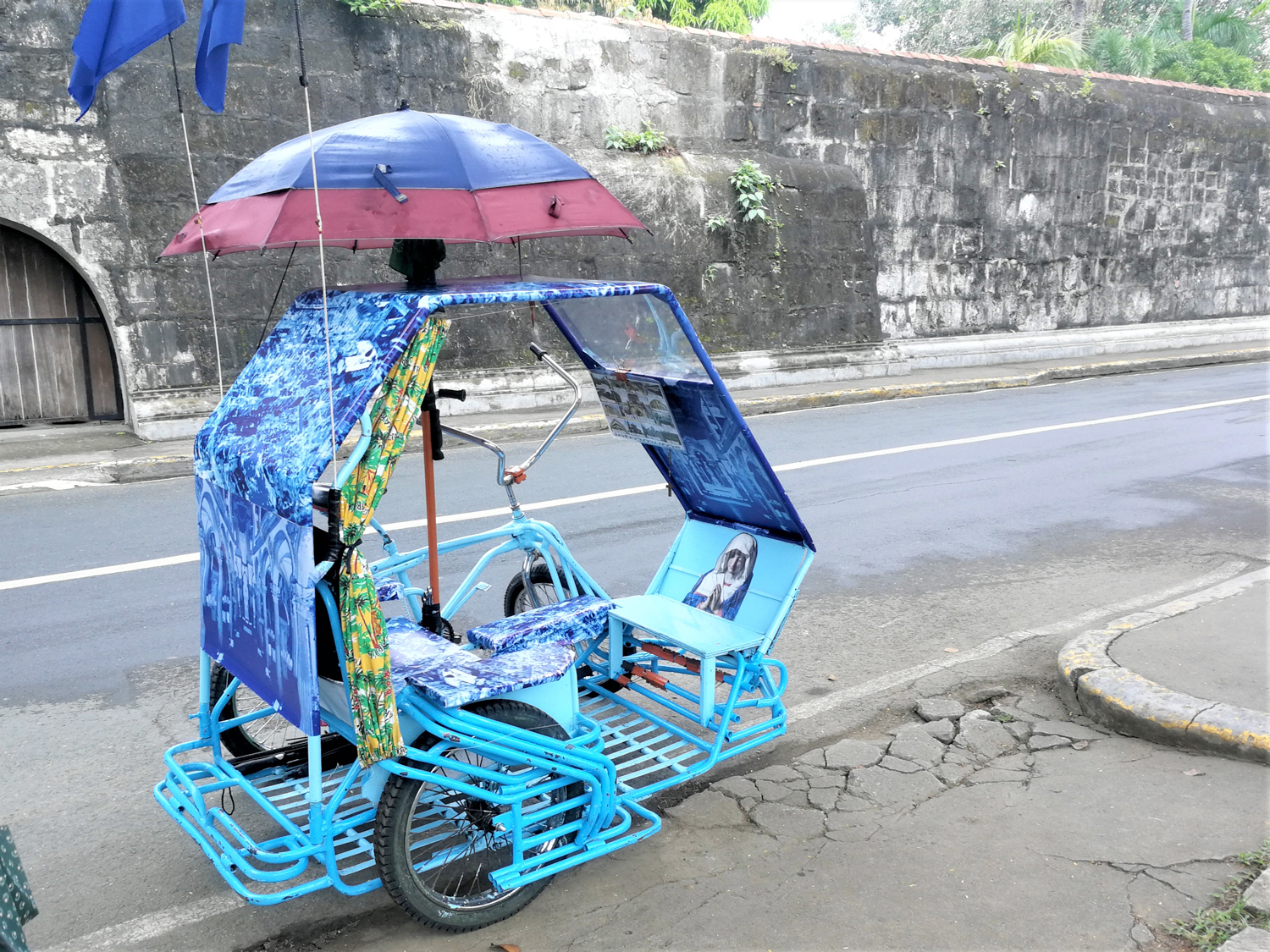Inside the Walled City of Intramuros
/From when the city was founded in 1571 until the end of the Spanish rule in 1898, Intramuros was Manila. The name Intramuros means “inside the wall.” For 400 years, Intramuros served as the center of the Spanish occupation, originally built to be the residence for Spanish government officials and their families. It was where the most influential and wealthy citizens of colonial Manila lived. The natives and Chinese were not allowed to live inside Intramuros, only the Spanish elite and mestizos.
The walls of Intramuros were meant to protect the city from foreign invasions. The walls were six meters high and three kilometers in length, covering an area of about 160 acres. Entry and exit were only through its seven fortified gates. Within the vast walls, throughout the 51 blocks of the city, were churches, hospitals, government offices, military barracks, schools, and houses of the Spanish elite.
Intramuros has been devastated by battles, fires, and earthquakes but has survived the test of time. It holds bittersweet memories of the colonial past, a heritage worth preserving and sharing with the world.
You can visit museums that preserve and promote Filipino culture and history, walk the cobblestone streets with lamp posts from 1800s, old Spanish houses, gardens, and churches. You can also play golf as the old surrounding moats have been transformed into a golf course. Security personnel are dressed like Spanish-era civil guards or Guardia Civil. To fully enjoy your visit, do some research, wear comfortable shoes, and bring a camera and bottle of water.
What to Discover:
1. Fort Santiago
Inside the Fort Santiago, you’ll enjoy a peaceful walk and chill in its gardens and lily pond. There’s a lot to see inside the Fort, like the Rizal Shrine museum, Baluarte de Santa Barbara, Baluartillo and Reducto de San Francisco Javier, Plaza De Armas, Rizaliana Furniture Hall, Rajah Sulayman Theater, and Almacenes Reales, storehouses for goods. You’ll also see the dungeons where hundreds of civilians and guerrillas were imprisoned, tortured, and executed during the Japanese Occupation in WWII. Though severely damaged by war and earthquakes the fort has been restored.
Location: Corner Santa Clara Street/G. Luna, Intramuros
Entrance Fee: Php75 for adults, Php50 for students and senior citizens (bring a valid ID).
Operating hours: Open daily, 8AM-9PM
2. Manila Cathedral
Located in the heart of Intramuros, Manila Metropolitan Cathedral-Basilica, better known as the Manila Cathedral, is one of the oldest and most famous churches in the Asia. It has been the venue for papal masses and has long been the seat of the Archbishop of the Philippines. From 1581 to 1958, this Neo-Romanesque-Byzantine cathedral has gone several major reconstructions due to wars, fires, typhoons, and earthquakes.
Location: Sto. Tomas, Intramuros
3. Plaza de Roma
During Spanish era, Plaza de Roma was considered the center of the city where bullfights and other public events were held, until it was converted into a garden in 1797. At the center of Plaza de Roma is a monument to Charles IV of Spain, which was erected in 1824, for his having sent the first batch of smallpox vaccines to the Philippines. Plaza de Roma is surrounded by the Manila Cathedral to the south, the Palacio del Gobernador to the west, and the Ayuntamiento de Manila to the east.
Location: Sto. Tomas, Intramuros (in front of Manila Cathedral)
4. San Agustin Church
San Agustin Church, the first church built in Luzon during the Spanish colonial period, is thus the oldest church in the Philippines -- more than 400 years old. It is under the auspices of The Order of St. Augustine and has weathered wars and seven major earthquakes. The present structure is actually the third Augustinian church erected on the site and was patterned after the temples built by the Augustinians in Mexico. The San Agustin church was rebuilt three times due to man-made and natural disasters.
This church is very much in demand for weddings and other ceremonies. It is recognized by the government and UNESCO as a historical landmark. It is also home to the tomb of the first governor-general, Miguel Lopez de Legazpi, and other Spanish conquistadors including Juan de Salcedo and Martin de Goiti.
Location: Cor. General Luna St./Real, Intramuros
5. San Agustin Museum
Adjacent to San Agustin Church, the San Agustin Museum showcases the rich history of Catholicism in the Philippines. In 1973, the monastery was converted into a museum. The galleries within have a huge collection of religious art and antiques from around the globe, including the Philippines, Spain, Mexico, Singapore, and China. You can also find ceramics, botanical drawings, liturgical goods, antique furniture and art pieces on display – from paintings, sculptures, and furniture. San Agustin Museum will help you to learn more of the history of Catholicism in the country.
Location: Cor. General Luna/Real, next to San Agustin Church
Operating hours: Open daily, 8AM-12PM/1PM-6PM
Entrance Fee: Php200 (adult), Php160 (student/child/senior)
6. Casa Manila
Located across the historic San Agustin Church, Casa Manila is a museum in Intramuros showcasing Spanish colonial architecture. Imelda Marcos had this two-story house built in the 1980s to look like one of the grand houses in Barrio San Luis, one of the four original villages of Intramuros in 1850’s.
This house is divided into rooms such as the sala, despacho, comedor, cuartos, cocina, baño with lavish features throughout and decorated with stunning antique furniture, tableware, artworks, all donated by various sources. Don’t forget to check the double-seated toilet. Back in the day, toilets were built to accommodate two or more users at a time, allowing them to sit beside each other and chat while doing their business.
Guests are not allowed to touch the displays and take pictures and can only walk on the red carpet inside the house. However, guests can walk around freely in the kitchen, toilet, and bathroom, and even touch the displays there.
Location: Plaza San Luis Complex, Cor. Real & Gen. Luna St., Intramuros, Manila
Operating Hours: Open daily (except Monday), 9AM-6PM
Entrance Fee: Php75 for adults; Php50 for students/child/senior citizens
7. Puerta Real Gardens
Puerta Real is located right in front of the main entrance of Intramuros, outside the south wall. It is an open green space garden perfect for walks, chilling, weddings and state dinners.
Location: 62 Gen. Luna St. Intramuros
Operating hours: Open daily
Entrance Fee: Free
8. NCCA Gallery
Located on the ground floor of the National Commission for Culture and Arts building is the NCCA Gallery, an exhibition space for the contemporary art scene in the Philippines. The NCCA gallery was established to help young artists get their much needed exposure.
Location: NCCA Building, 633 Gen Luna St. Intramuros (near the San Agustin Church)
Operating hours: Monday-Friday (9AM-5PM)
Entrance Fee: Free
9. Baluarte de San Diego
Built from 1591-1594, Baluarte de San Diego was originally named Nuestra Senora de Guia (Our Lady of Guidance). It’s a famous bastion in Intramuros, constructed as part of the fortifications and designed to repel invasion. This bastion has survived wars, earthquakes, and the ravages of time. Aside from the bastion itself, you’ll also see the beautiful gardens, fountains, and the original cannons with details on when and where they are made. This is also a popular place for weddings and special occasions.
Location: Sta. Lucia Street, Intramuros
Entrance Fee: Php75 for adults, Php50 for children/students/senior
Operating hours: Monday-Sunday from 8AM-5PM, closed for special occasions
10. Philippine Presidents’ Murals
On this site, the metal moldings of the faces of the Philippine Presidents are displayed.
Address: Sta. Lucia St., Intramuros
Entrance Fee: Free
11. Cuartel de Sta. Lucia
Now, you’ll see Cuartel de Santa Lucia as just a ruined building. It was constructed for the Artillería de Montaña in 1781. In 1905, it was opened as a military school, or the Philippine Military Academy (now Baguio). The building was ruined during World War II; the remaining walls were reconstructed by the Philippine Constabulary. The interior was never rebuilt and is being converted into a park.
Address: Sta. Lucia Street, Intramuros
12. Ayuntamiento de Manila
In front of Plaza de Roma is the Ayuntamiento de Manila, a neoclassical building. It was also known as the Casas Consistoriales and nicknamed Marble Palace. It was rebuilt three times over the past four centuries after being damaged by earthquakes and wars. It was the seat of the Manila City Council, which consisted of two alcaldes (city leaders), eight oidores (judges), a clerk, and a chief constable. It was destroyed in World War II and reconstructed thereafter; the building now houses the offices of the Bureau of the Treasury.
Location: Cor. Aduana/Cabildo Street, Intramuros
Operating hours: Tuesday (11AM-12PM), Friday (4PM-5PM)
Entrance Fee: Php40 (adult), Php10 (students)
13. Intramuros and Rizal Bagumbayan Light and Sound Museum
The Intramuros and Rizal Bagumbayan Light and Sound Museum showcases the history of the Philippines and the Filipino's journey to freedom in a one-hour show combining lights, visual effects, soundtracks, sculptures, paintings, representations and other technologies. The show narrates the life of Jose Rizal.
The whole show is Php1500; you can join a group if you are alone or make a group with at least 10 people to avail the 150/head museum fee.
Location: Sta. Lucia St., Intramuros
Operating hours: Open daily, 9AM-6PM *reservation required
Entrance fee: 150 pesos for adult/student/child, 120 pesos for senior(with valid ID)
14. Fr. George J. Willman, SJ Museum
Fr. George J. Willmann was an American priest who lived in the Philippines and eventually became a Filipino citizen. This small museum was created with texts and photos of Fr. George J. Willmann so the public will know more about him and to give information on sainthood.
Location: Corner G. Luna/Sta. Potenciana
Operating hours: Monday-Friday, 7AM-4:30PM, Saturday-Sunday (by appointment)
Entrance Fee: Free
15. Bahay Tsinoy
Bahay Tsinoy (Chinese-Filipino House), a museum in Intramuros that documents the history, lives, and contributions of the ethnic Chinese in the Philippine.It houses the Kaisa-Angelo King Heritage Center.
In Bahay Tsinoy, you'll see a gallery of rare prints and old photographs of scenes of old Binondo. It has the Ching Ban Lee Ceramics Gallery, Jimmy Ongking Hall, and Chinben See Memorial Library, which holds 8,000 books, documents, magazines, dissertations, and other articles on the Chinese in the Philippines and other parts of the world. There is an extensive collection of books on Philippine society, economy, culture, and politics; some of the rare books are almost 200 years old.
Location: 32 Anda St. cor. Cabildo St., Intramuros
Operating hours: Open daily (except Monday), 1PM-5PM
Entrance Fee: Php100 for adults, Php60 for students/child, Php80 for senior
16. Palacio del Gobernador
Just in front of Plaza de Roma, Palacio del Gobernador was the official residence and office of the Spanish governor generals during the Spanish colonial period. Today, it's the office of the Intramuros Administration and several government offices.
Location: Gen. Luna St. Cor. Postigo Cor. Soriano St., Intramuros
17. Plazuela de Santa Isabel
Plazuela de Santa Isabel was built to commemorate the thousands of civilians massacred within Intramuros by the Japanese forces during the Battle of Manila in February 1945. The statue in this small park is Sta. Isabel caring for the wounded during the battle of Intramuros.
Location: Cor. General Luna and Anda Street, Intramuros
Other things to do:
1. Ride a Kalesa
You can ride a kalesa, an old-fashioned way to get around the walled-city. In the 18th century, horse-drawn carriages in the Philippines were mostly reserved for high officials.
Most of the kalesas can be found outside Manila Cathedral. To get the best of your Kalesa trip, make sure to first negotiate the price before setting out to avoid getting ripped off. As of now, the regular price of a kalesa ride is 500 pesos per 30 minutes.
2. Join a Bamboo Bike Tour
Joining a Bamboo bike (bambike) tour offered by Bambike Ecotours is an exciting and an educational way to get around Intramuros. The guests will ride on bamboo bikes, the greenest bikes on the planet, led by experienced tour guides. Bambike is a socio-ecological enterprise that hand-makes bamboo bicycles with fair-trade labor and sustainable building practices. The builders of the bamboo bikes (aka Bambuilders) are from Gawad Kalinga, a Philippine-based community development organization for the poor.
Address: Plaza San Luis Complex, Real St. corner General Luna St., Intramuros (near Casa Manila)
Tours: Tuesday to Sunday, 9 AM to 6 PM
Price: price range from 600 – 1,200 pesos
3. Art and Souvenir Shops
If you’re into arts and crafts, you’ll also enjoy going to arts and souvenir shops. There are a number of craft shops around Intramuros. One of the very unique shops is the Papier Tole Shop, a quaint little store said to have been established in 1668.
Location: General Luna St., Intramuros
Dropping by Silahis Arts and Artifacts, an antiques and crafts shop established in 1966 is a wonderful experience. Silahis means sun’s rays. It has been dedicated to developing a deeper understanding of the multicultural heritage of the Philippines. It has five departments of traditional artifacts and cultural crafts. In these five departments, you’ll see folk arts, excavated porcelain, old maps, textiles, primitive arts, old and new publications on Asia, fine arts, original prints and sculpture, and the very best of the Philippine arts, antiques, and collectibles.
Location: 744 Calle Real del Palacio (Gen. Luna), Intramuros
4. Go around through e-trikes or pedicab
Another option for going around Intramuros is an e-trike. An e-trike is a three-wheel electric vehicle. It covers the main spots in the city around in 25 minutes. It is operated at 2 to 5 min intervals from 7AM to 7PM and there are 13 EV-stops: Round Table, PLM, San Diego Gardens, DOLE, San Agustin Church, Manila Cathedral, Plaza Roma, Lyceum, Mapua, Manila HS, Letran, NPC, Immigration. You can buy tickets from the ticket booths. Fare per a ride: Php25 for adults, Php20 for students, Php17.50 for seniors
You can also charter E-Trike service that would help you design your own Intramuros tour. Fare is Php800 per 1 hour and the e-trike is good for 6 persons.
You can also help the locals by riding a pedicab, a three-wheeled public conveyance. Make sure you first negotiate the price with the driver before agreeing with the tour. The price of the tour is Php350 per 30 minutes.
5. Ghost Tour
If you love history and horror, then the Intramuros Ghost Walk is for you. It is an alternative take on the historical tour within the walls that happens at night. Visit their facebook page, Intramuros Ghost Walk to message them and to get to know more. The tour fee is at Php250 per person. You are required to at least fill in 8 slots.
Renz Mae Ladroma is a 22-year old PHP Developer, IT Technical Writer and Scrum Master based in Manila. She loves writing (renzladroma.contently.com), queries, scripts, meditation, arts, history and the warmth of the sun.


























